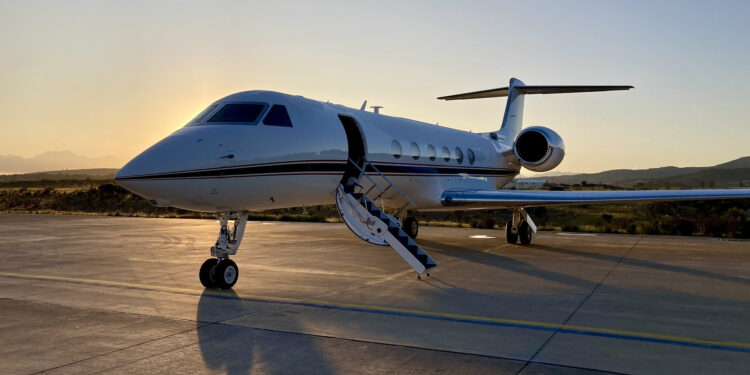Operating to Chile – Part 1: Airports, Ground Handling & Parking

This is a post by author Tracy Zack. Tracy is the Customer Experience Assistant at Aviasur, a Universal Aviation® Certified ground handler, which has an FBO in Santiago, Chile and provides ground support throughout the country. Tracy is an expert on business aircraft operations in Chile and can be contacted at tracyzack@univ-wea.com.
This business aviation blog post is part one in a series on operations to Chile.
Stretching down the west coast of South America, Chile is a country where some 90% of the 18 million population lives in the middle third of the territory, around Santiago. The far north, close to the Atacama Desert, and the extreme south are relatively unpopulated. Most general aviation (GA) operations go to the Santiago area.
The following is an overview of what you need to know:
1. Popular airports
Business aviation flights to Chile are predominantly destined for the capital Santiago (SCEL). Other popular airports include Arica (SCAR) and Antofagasta (SCFA), both airports of entry (AOEs) in the north, Calama (SCCF) a business and tourism AOE as well as Puerto Mott (SCTE) and Punta Arenas (SCCI), both AOEs in the south of the country. You may also consider Puerto Natales (SCNT) in the far south and close to popular tourism areas but this location has limited hours of operation. Easter Island (SCIP) is available to GA as well but there are operating restrictions to be mindful of.

SCEL Airport
2. Airport hours and curfews
SCNT in only an AOE upon request and you’ll need 48 hours advance notice to set this up. Normal summer hours of operation here are 0900-1800 local but the airport will remain open until 2100 local when scheduled commercial operations are expected. While SCNT is close to popular national parks, its extreme southern location means that winter conditions are usually very snowy, cold and dark. A more useable southern location, with 24-hour operations and better GA infrastructure, is SCCI although it’s farther from some tourism areas. Note that although SCIP is a 24-hour AOE arrivals/departures must be notified at least 24 hours in advance. There are also airport slot and operating restrictions to consider at this Easter Island location. Access can be a little tricky to coordinate at times.
3. Ground handling
The only fixed base operators (FBOs) in Chile are at SCEL and these are full service 24-hour facilities. At other locations handlers work out of main terminals and escort passengers/crew through the customs, immigration and quarantine (CIQ) process. When operating to outlying airports it may be recommended to fly a handler out from SCEL to assist in coordinating local services. Most AOEs in Chile have reasonable selections in terms of ground support equipment (GSE).
4. Aircraft parking
There are seldom issues with GA parking availability at AOEs in Chile. However, there may be GA parking restrictions or limitations from time to time at SCIP and SCFA. Normal procedure at SCEL is pull up to the FBO and cut engines prior to being repositioned to the assigned parking spot. In the case of SCFA, during the peak summer season when parking is in high demand, you’ll normally deplane passengers and then be towed to a high-density remote parking area.
5. Infrastructure
Runways, taxiways and ramp areas are in good condition at all AOEs in country with no major airport or runway construction projects planned.
6. Tech stops
SCEL is the preferred tech stop in Chile for uplifts as GA infrastructure is better and aircraft can be turned within 60 minutes. If you’re planning a tech stop in the north of the country consider SCAR but plan on providing 24 hours advance notice. For international tech stops within Chile there are no CIQ, agriculture or quarantine procedures involved, as long as nobody is leaving the airside area.
7. Additional Reading: Chile operations – Series Index
Note: Links will be updated as articles are published.
- Part 1 – airports, ground handling & aircraft parking
- Part 2 – permits, airport slots, customs & immigration
- Part 3 – aviation fuel, security, in-flight catering & hotels
Conclusion
There are plenty of AOEs when traveling to Chile, with full services available. However, consider potentially restricted operating flexibility when visiting airports that are only AOEs upon request. Also, note that aircraft parking is usually not an issue, but from time to time there may be congestion so it’s best to always check in advance.
Stay tuned for Part 2, which covers permits, airport slots, visas, customs and immigration when operating to Chile.
Questions?
If you have any questions about this article or would like assistance planning your next trip to
Chile, contact me at tracyzack@univ-wea.com.



